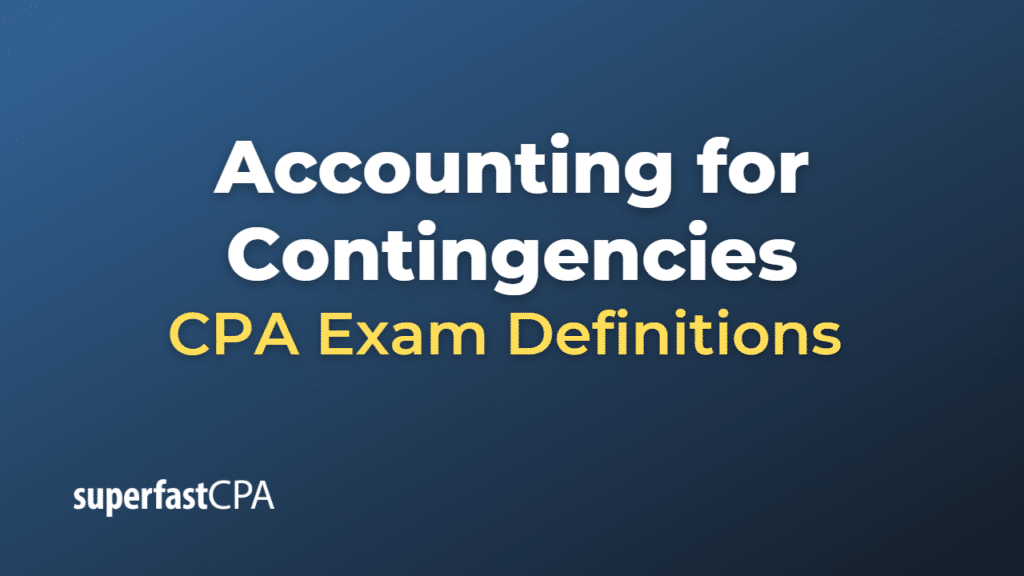Accounting for Contingencies
Accounting for contingencies refers to the process of recognizing and reporting potential financial obligations, losses, or gains that may arise from uncertain future events or conditions. These events or conditions are not entirely within the control of the company, and their outcomes are uncertain at the time of financial statement preparation.
Contingencies can be broadly classified into two categories: gain contingencies and loss contingencies.
- Gain Contingencies: These are potential gains or favorable outcomes that may result from uncertain events, such as the favorable resolution of a lawsuit, or a possible business acquisition. Generally Accepted Accounting Principles (GAAP) require that gain contingencies should not be recognized until they are realized or realizable, which means they must be virtually certain to occur.
- Loss Contingencies: These are potential losses or unfavorable outcomes that may arise from uncertain events, such as the loss from a pending lawsuit, product warranties, or environmental cleanup liabilities. GAAP requires that a loss contingency be recognized when both of the following conditions are met:a. It is probable that an asset has been impaired or a liability has been incurred at the reporting date. b. The amount of the loss can be reasonably estimated.
When both conditions are met, the company should record a provision (liability) for the estimated loss on its financial statements. If the loss is only reasonably possible (but not probable) or the amount cannot be reasonably estimated, the company should disclose the nature of the contingency and an estimate of the possible loss, if possible, in the notes to the financial statements.
Accounting for contingencies helps users of financial statements to better understand the potential risks and uncertainties a company faces, and it enables them to make more informed decisions about the company’s financial position and performance.
Example of Accounting for Contingencies
Let’s consider a company facing a lawsuit, which is a common example of a loss contingency.
Example: XYZ Corporation is facing a lawsuit from a customer alleging that one of its products caused significant damages. The trial is still ongoing, and the outcome is uncertain. At the time of preparing the financial statements, XYZ Corporation and its legal counsel assess the situation as follows:
- Probable outcome: After analyzing the available information, the legal counsel determines that it is probable (more likely than not) that XYZ Corporation will lose the lawsuit and have to pay damages to the customer.
- Reasonable estimation of loss: The legal counsel estimates that, based on similar cases and the facts of this specific case, the damages that XYZ Corporation may have to pay would likely be in the range of $5 million to $7 million, with $6 million being the most likely amount.
Since both conditions for recognizing a loss contingency are met (probable outcome and reasonable estimation of loss), XYZ Corporation should record a provision for the estimated loss on its financial statements.
The journal entry for this provision would be:
Debit: Legal Expense (or Loss from Lawsuit) $6,000.00
Credit: Provision for Lawsuit Liability $6,000.00
This entry recognizes the estimated loss of $6 million as an expense on the income statement and a liability on the balance sheet. In addition, XYZ Corporation should disclose information about the nature of the lawsuit and the estimated range of loss ($5 million to $7 million) in the notes to the financial statements.
By accounting for this contingency, XYZ Corporation provides users of its financial statements with a more accurate picture of its financial position and potential risks it faces, allowing them to make better-informed decisions.













